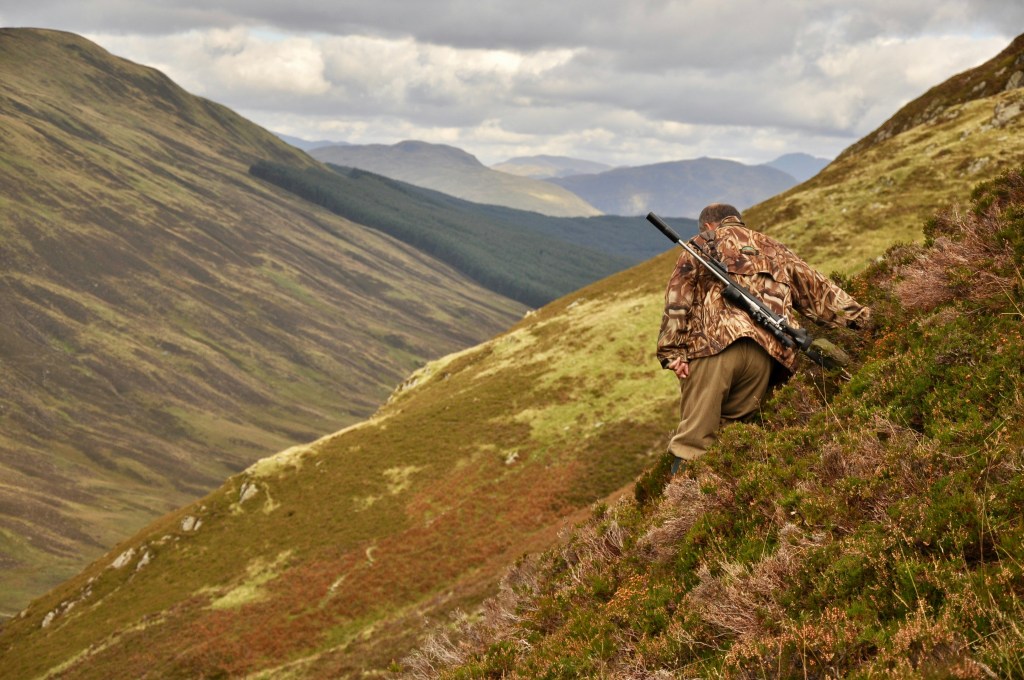Mastering Tracking Game: Essential Skills for Success in the Field
Enhance your tracking skills with practical tips and techniques. Gain confidence in the field and improve your success rate. Read the article now!
Tracking Game: The Skill That Separates Good Hunters from Great Ones
Tracking is an intricate skill that involves interpreting the landscape as if it were a narrative waiting to be unveiled. By mastering tracking skills, hunters can significantly improve their success rates while creating a deeper connection to the natural world around them.
Understanding the nuances of game movement, such as tracks, scat, and feeding signs, transforms the hunt into an engaging experience that offers valuable insights into animal behavior and habitat.
Recognizing Animal Signs in the Field
From scat to broken branches, animals leave subtle clues. Identifying these signs is crucial for predicting movement. Beginners should start with a solid foundation of knowledge, focusing on stride, straddle, depth, and clarity of tracks to narrow down species.
Sign identification
When identifying signs, consider factors like stride, straddle, depth, clarity, shape, and size. Footprints are usually the first signs examined. “Straddle” refers to the width between tracks, while “stride” indicates the distance between steps. The shape and size help identify species, such as oval coyote tracks with four toes and claw marks. Depth can reveal an animal’s weight and movement, but environmental factors also affect the clarity of the tracks.
Scat and droppings
In addition to footprints, scat and droppings are vital components of tracking. When interpreting these signs, focus on shape and consistency, which can offer insights into the animal’s diet and health. It’s equally important to consider the freshness and location of the droppings, as these factors can reveal feeding areas and travel patterns, further enhancing your understanding of the wildlife in the area.

Decoding Tracks and Trails for Hunting Advantage
Tracks provide valuable insights beyond an animal’s location; they reveal size, speed, and behavior. For hunters, analyzing trails through brush and terrain is essential for determining optimal ambush points and enhancing success rates.
Hunting trails often display broken branches and worn paths, indicating frequent animal movement. Hoof prints and track patterns, especially those of deer, provide key information about size and recent activity, enabling hunters to make informed decisions.
Additionally, understanding game trails can reveal crucial details about animal bedding and feeding habits. This knowledge allows hunters to anticipate movements and strategize effectively in the field.
Using Terrain to Predict Game Movement
Ridges, valleys, and water sources are crucial elements that shape the movement of animals in their natural habitats. By gaining a comprehensive understanding of these terrain features, hunters can more effectively anticipate where game may appear and when these animals are likely to be active.
Terrain reading
Effective terrain reading is crucial for tracking both large and small game in diverse environments. Different terrains present unique characteristics that hunters should familiarize themselves with:
- Woodlands: In wooded areas, the presence of food and water sources often determines the location of game trails. Pay attention to natural clearings and streams, as these attract wildlife.
- Rugged Terrain: Features like ridges and slopes can serve as natural pathways for animals. Understanding the elevation changes helps predict animal behavior and movements.
- Plains and Open Terrain: In grasslands, look for animal paths marked by consistent wear in the vegetation or loose soil. Natural covers such as rolling hills and tall grass can also provide concealment.
- Wetlands: Muddy and sandy areas in wetlands are prime spots for tracking, especially if fresh animal tracks are visible. Observing these signs can lead to nearby game.
Game movement patterns
Recognizing game movement patterns is key to successful hunting. Various signs indicate how animals behave and where they are likely to be found:
- Feeding Patterns: Damage to crops or visibly chewed bark on trees can indicate where animals have been feeding. This can guide you to high-traffic areas.
- Bedding Areas: Look for indentations in grass, leaves, or pine needles, which denote where animals have been bedding down. For instance, deer typically leave oval-shaped impressions that can be easily identified.
- Trails: Worn trails are clear indicators of animal movement. Hunters should note the consistency of these trails and look for droppings, as they provide further clues about recent activity.
- Rub Marks: Bucks often rub their antlers against trees to remove velvet or to mark territory. Identifying these rub marks can help hunters understand where these animals are present and their movements within an area.

The Role of Wind and Scent in Tracking Success
Mastering wind direction and scent control is crucial for hunters. Even with excellent tracking skills, a change in wind can reveal your presence. By understanding how wind carries scent, hunters can increase their chances of approaching deer and improve their overall hunting strategy.
Impact of wind
Deer are especially wary creatures and use scent from the wind to their advantage. Interestingly, when wind is present, deer tend to move more slowly and more cautiously. This behavior gives hunters an opportunity to adjust their tactics accordingly. It’s vital to remain conscious of the wind direction and to be aware of where deer are in relation to it.
Wind awareness
Incorporating wind awareness into your tracking strategy is essential. As you track, always consider how your own scent may be carried by the wind in the direction of the deer. By remaining vigilant about wind patterns and adapting your movement, you can minimize the likelihood of your scent being detected.
Big Game vs. Small Game: Key Differences in Tracking
Tracking a deer or elk requires different skills than pursuing rabbits or birds. Recognizing these distinctions helps hunters adapt strategies for each type of quarry.
Tracking elk
For elk, focus on identifying tracks, smell, rubs, and droppings. Fresh snow and rain are ideal for clear footprints. Elk have a distinct odor and exhibit signs of rubbing on bushes. Fresh droppings indicate nearby presence, but moisture may mislead you into thinking old droppings are fresh. Check for dryness inside the droppings to tell their age.
Deer tracking basics
For deer, look for tracks, smell, rubs, and droppings. Tracks can lead to food sources, so observe areas with disturbed leaves and twigs. Male deer rub their antlers during mating season, leaving behind distinctive rub signs.
Tracking small game
Tracking small game, such as rabbits and birds, uses different techniques. Look for rabbit tracks, smell, and smaller pellet-shaped droppings. For birds, focus on flight patterns, nests, and bedding areas, and identify nearby water sources. Understanding these signs improves your ability to locate and pursue small game successfully.

Blood Trails and Post-Shot Tracking
Sometimes tracking begins after the shot. Following blood trails requires patience, attention to detail, and the ability to recognize subtle cues that lead to a successful recovery.
When it comes to specific shot placements, the type of wound can provide vital clues.
- Liver Shot: A liver shot, for instance, usually causes a deer to travel up to a mile before succumbing, and the blood will appear dark red.
- Heart Shot: A heart shot may result in the deer traveling only a few hundred yards; in this case, the blood is typically bright red, and the animal will instinctively seek cover.
- Lung Shot: A lung shot can lead to similar outcomes, with the deer moving just a few hundred yards and displaying bright red blood as well. Mortally wounded deer from this type of shot also often seek refuge.
- Gut Shot: Gut shot presents a more challenging scenario. The deer may wander for an extended period—up to five hours—and the blood can have a green tint, accompanied by a distinct odor if the intestines were involved.
Ultimately, following blood trails effectively requires not just an understanding of these indicators but also the cultivation of essential tracking skills. Each hunting experience refines a hunter’s ability to discern the details in the environment, ensuring they are better equipped for future encounters.
Hiking and Scouting as Tracking Training
Spending time on the trail sharpens your eye for signs and terrain, making it an invaluable experience for anyone interested in nature. Hikers often develop natural tracking instincts over time, which can be advantageous when preparing for hunting.
To improve your tracking abilities, make it a habit to engage in hiking and scouting. This practice helps build your physical stamina and enables you to learn and identify various tracking signs. Setting up deer stands is an excellent way to observe wildlife patterns and track movement. Alternating between spending time in the stand and exploring the ground can provide you with a deeper understanding of animal behaviors and their preferred habitats.
Ultimately, dedicating time to nature enriches your knowledge of various elements and terrains. It fosters a connection to the environment that enhances your skills. With consistent practice, you’ll become more adept at spotting game trails and recognizing the subtle signs left by wildlife, making you a more capable and confident hunter.

Protecting Your Hunting Gear with Insurance
While tracking skills preserve your success, insurance protects the tools that make the hunt possible. Coverage for optics, guns, and essential gear ensures peace of mind when in the field. Specialized firearm insurance ensures that guns and related equipment are protected against theft, fire, or other forms of damage. Securing the right insurance policy is essential to safeguarding your investment and preserving your passion.
Sources
https://foxhilloutfitters.com/blog/wildlife-tracking-101-how-to-read-signs-in-the-field/
https://www.divebombindustries.com/blogs/news/reading-game-trails-and-sign-for-hunt-planning
https://buckindad.com/blogs/news/tracking-game-like-a-pro-signs-trails-amp-tips-for-new-hunters
https://www.lohoutfitters.com/blog/elk-hunting-101-reading-the-signs
https://survivaldispatch.com/basic-tracking-skills-to-hunt-small-game/
https://www.letsgohunting.org/resources/articles/big-game/how-to-read-the-land-for-deer-hunting-in-different-terrains/
https://www.divebombindustries.com/blogs/news/the-role-of-hiking-in-tracking-game-trails-a-guide
https://www.adfg.alaska.gov/index.cfm?adfg=wildlifenews.view_article&articles_id=677
https://cervicide.com/how-to-track-and-trail-game-like-a-pro/
https://www.themeateater.com/wired-to-hunt/whitetail-hunting/how-to-track-a-buck-in-the-big-woods
https://chirucahunting.com/2024/06/13/understanding-the-techniques-of-tracking-and-tracking/
https://www.whitetailhabitatsolutions.com/blog/whitetail-blood-tracking-tips
